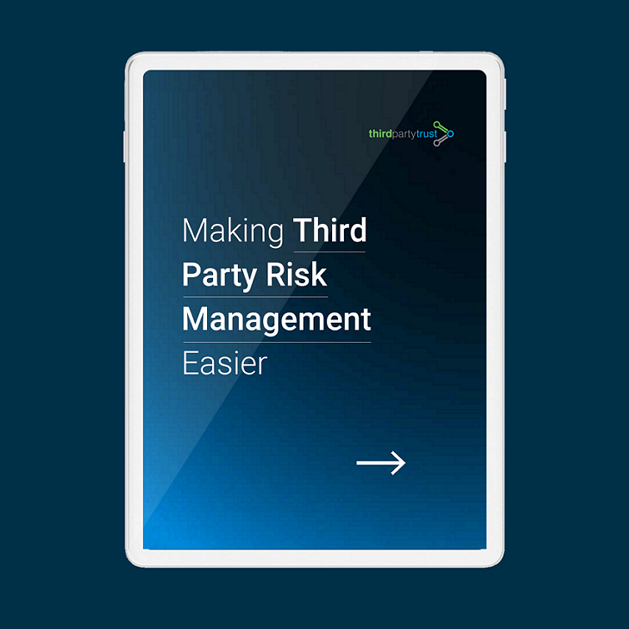How Third Party Risk Management Ongoing Monitoring Enhances Vendor Monitoring
Cybersecurity and third party risk management (TPRM) are not one-and-done efforts, but day-to-day strategic initiatives. After you set up your vendor risk assessment process, engaging with third party vendors is only the beginning. Continuous monitoring is the key to constantly reassess the risk that vendors pose to your organization, and proactively detect any changes in their security posture.
Continuous monitoring is the ongoing and systematic process to evaluate and detect compliance and security issues in real time, providing a constant overview of the third party risk landscape.
Most organizations understand its importance, especially amidst a series of headline-grabbing supply chain attacks such as Kaseya or SolarWinds. However, for some, it can be challenging to decide where to start building and scaling an end-to-end TPRM program that truly monitors risk on an ongoing basis.
Why Continuous Monitoring is a Must
Traditional security controls like point-in-time risk assessments, firewalls, antivirus, and pentests are not dynamic and proactive enough to protect against sophisticated attacks. Continuous monitoring uses threat intelligence principles to automate the analysis of security controls, vulnerabilities, and other cyber threats to support risk management decisions.
In global, interconnected supply chains, organizations need real-time visibility into any vulnerability in their infrastructure and networks. Anything can happen after you sign a contract with a third party vendor that might change your security expectations, including a pandemic!
Read More: Why You Need to Reassess Vendor Risk on an Ongoing Basis
Making sure third parties are not exposing your organization to unnecessary risk is an ongoing responsibility. Constant reassessment of their security posture is especially important to ensure compliance with your industry and company-specific security standards.
Here’s how continuous monitoring enables a much more efficient and scalable approach to vendor risk assessments:
- Enabling a proactive approach through real time insight into your vendors. You can observe movement against risk thresholds that trigger the need for assessment based on changes to security posture instead of calendar date.
- Providing objective context to prevent human error and inaccuracies. Is your vendor really patching and scanning for malware regularly? Is their SSL certification up to date? Using objective, externally observable information to verify vendor answers helps to easily determine the accuracy of the assessment, or flag areas for follow up.
- Saving time and resources, as opposed to conducting manual assessments that are slow and costly. With some questionnaires approaching thousands of questions, and many organizations working with hundreds or thousands of vendors, assessments can take a great deal of time and resources to put together, fill out, review, and analyze.
- Allowing for easy customization, as opposed to a ‘one size fits all’ approach using the same sets of questions for all vendors. Using automation and data intelligence, assessments can be tailored to the vendor, industry, or compliance need. Do they need to comply with GDPR or PCI standards? What type of data will they have access to? This customization can save significant time and resources, especially if you work with hundreds or thousands of vendors.
- Putting your focus only on the highest risks, as opposed to assessing all vendors equally despite their criticality or scope. Some critical vendors may need to be assessed more than once a year if they have a significant change to security posture, while a Tier 3 vendor with no changes may not need to be reassessed at all, or once every few years. This can significantly reduce the amount of work in the pipeline for your security team, and allow you to reallocate resources strategically.
How to implement Continuous Monitoring
Automation can make a significant contribution. You can automate your end-to-end third party risk management process, from the initial request of security information to vendors, to their periodic reassessment based on changes in scope, contract expiration, or renewal dates.
By combining due diligence and risk assessment outcomes with risk scoring and data intelligence, you can gain control and increased visibility into the health of your vendor ecosystem. Thus protecting your organization at all fronts.
The ThirdPartyTrust TPRM automation tool integrates valuable insights from partners like BitSight, RiskRecon, Osano, SpyCloud, and Supply Wisdom to drive value at every stage of your assessment process. This can help you detect compliance and risk issues across your vendor population.
Explore ThirdPartyTrust Integrations for Continuous Monitoring
ThirdPartyTrust also includes a reassessment functionality that allows you to re-define assessment requirements and due dates, using security ratings and alert mechanisms to detect when they go below your standards. You could, for example, automate requests for pentests or SOC reports every year, as well as custom workflows for your team to follow up on documented risk.
A streamlined continuous monitoring process keeps you in the know of how much risk you are taking by maintaining a relationship with a third party vendor, and provides insights to make risk-based decisions on whether to continue your business or not.
Technology Can Help
While the traditional, manual approach to TPRM using emails and spreadsheets was not scalable; ThirdPartyTrust has developed a Network Approach to TPRM. Enterprises and vendors connect in a single platform to exchange information, accelerate the assessment process, and communicate about findings and updates in security documentation and requirements.
Enterprises can leverage thousands of third parties already evaluated on the ThirdPartyTrust platform and 10+ integrated data feeds to trust but verify vendor security. Vendors can build a single security profile to expedite the response to security assessments.
This accelerates the risk assessment process from NDA to close, ultimately cutting down redundancies and inefficiencies, and increasing TPRM efficiency up to 75%. Imagine having the ability to assess twice as many vendors as you do now, or the ability to save up to 95% hours when responding to security requests – Without adding bodies to the process!
Read More: How The Network Approach Makes TPRM Easier for Enterprises and Vendors
For enterprises, the ability to push out information requests to third parties is an essential feature. ThirdPartyTrust allows you to collect, review, and assess vendor information from multiple data sources like:
- Public and external data sources e.g. company website, market data, news items.
- Information provided by the third parties as they fulfil your requirements, through questionnaires, assessments, and insurance requests.
- Internally gathered information about the third party, like internal surveys, data provider scores, findings, and document remediations.
In an always changing environment, full of threats and emerging risks, third party risk management is of great importance to maintain a secure vendor ecosystem and protect your data integrity, as well as that of your customers, and re assessment becomes a vital part of that process.
Are you ready to automate your TPRM Lifecycle and reduce third party risk?

Requesting and responding to risk assessments should not be a killer
Rising regulatory pressure is coupled by increasing third party risks. As a result, enterprises and third parties are taking greater measures to assess and manage risk across their supply chain.
This strategy guide explains how to make third party risk management easier, solving security and compliance problems for both sides of the equation.




